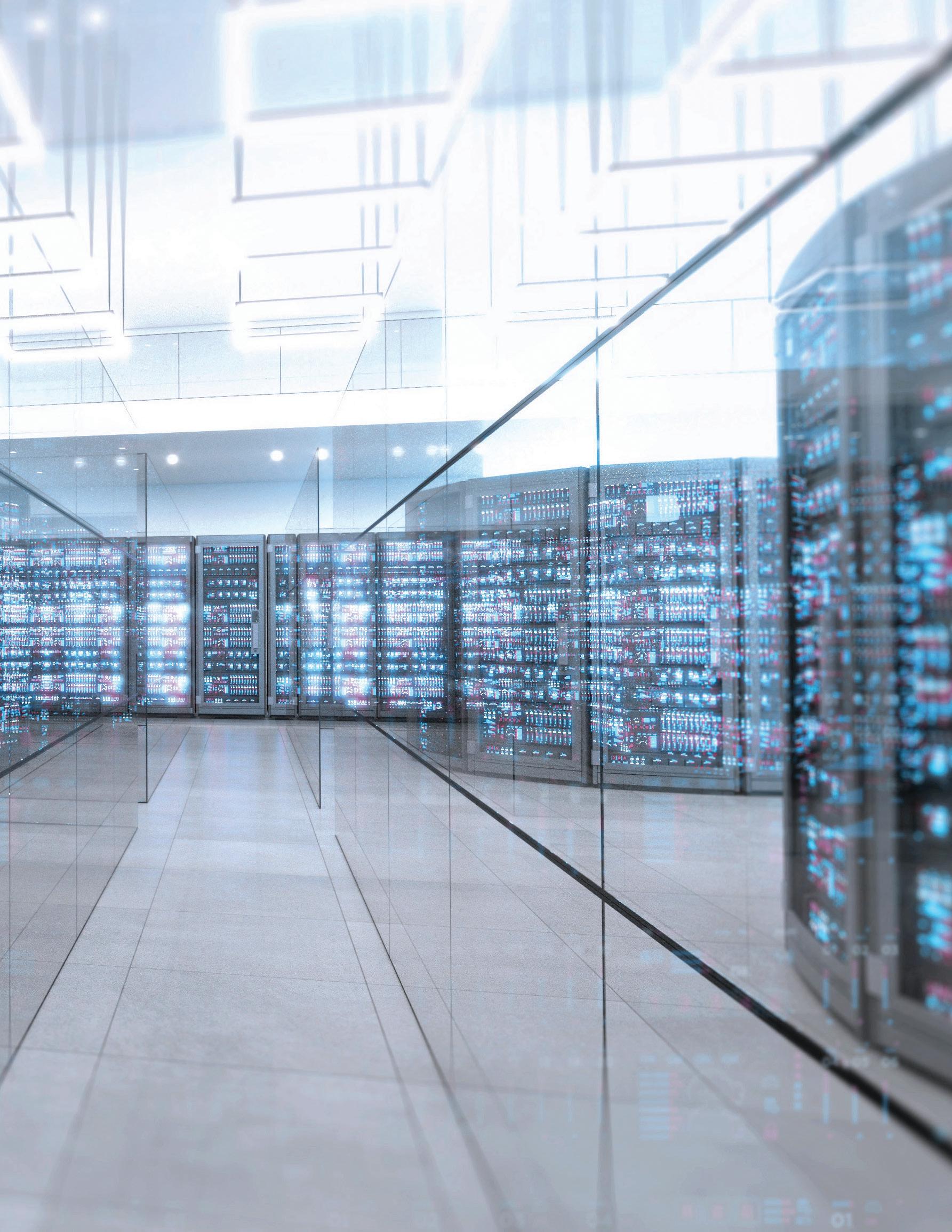
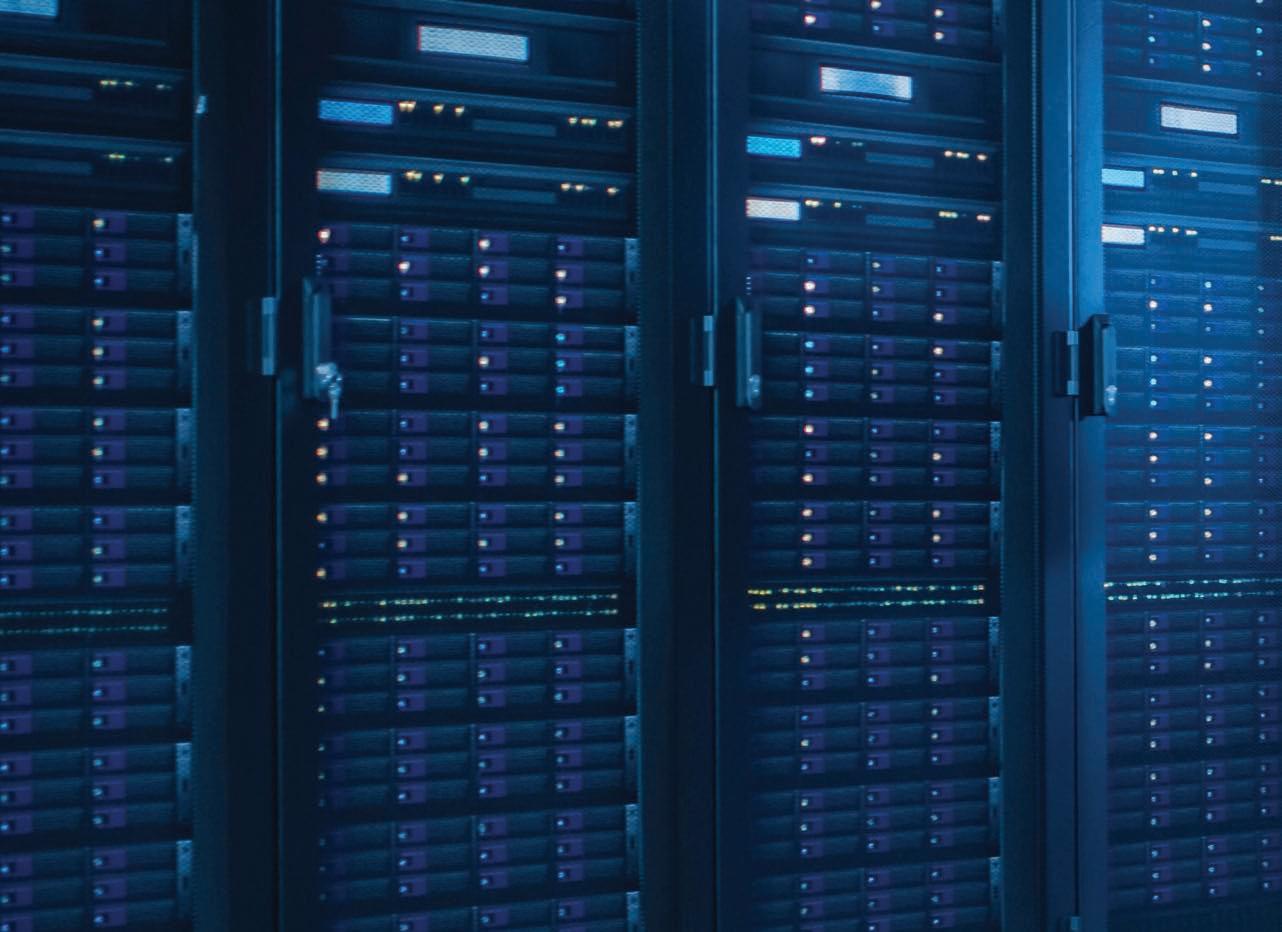



This Data Center Application Guide is your roadmap for best practices and solution recommendations for future-ready data centers that can deliver the desired outcomes for end users and integrators.
This guide is primarily designed for contractors, integrators and consultants, but it is also a resource that can be shared with end-user customers to illustrate the importance of sustainability initiatives, infrastructure and technology within their facilities.
As individuals, communities and companies of all sizes increasingly rely on digital services and products, the need for data centers is progressing at an accelerated pace. These centers are essential to digital infrastructure; they host storage systems, servers, routers and computing equipment that organizations use daily and ensure users can access vital information and communicate effectively.
Wesco is uniquely positioned to develop this guide based on our strategic partner relationships and our extensive experience in the data center industry. We have expertise across network infrastructure,
communications and networking, lighting, security, A/V and safety. In addition, we can provide services that include advisory collaboration, installation enhancement, project deployment and supply chain management.
Our insights in the data center space, along with our global partner ecosystem and relationships with thousands of manufacturers, give us the ability to provide the recommendations, solutions, products, services and best practices needed to build, modernize and maintain an optimized and future-ready data center.

Supporting your clients with impactful solutions that keep life running smoothly and completing projects on time and within budget is no easy task. It requires a team of skilled contractors, integrators and trusted products from world-class suppliers, and a partner like Wesco to deliver on what you need, when, where and how you need it.
We take a collaborative approach to deliver a complete data center offering, a broad portfolio of related products (safety, electrical, MRO and more), and value-added services designed to support partners like you.

Building and supplying a data center is very different today than it was five or ten years ago. Data center operators are facing more competition and more pressure, creating a challenging business environment. How data centers are used, how their workloads are deployed, and how efficiently they operate are under immense scrutiny from governments and communities. Increased application usage, artificial intelligence, 5G expansion, sustainability requirements, staffing shortages, supply chain disruptions and global digitization place greater demand on facilities and resources.
Powering these facilities has become a major challenge. Data centers can use a tremendous amount of power to operate and, increasingly, governments around the world are demanding more transparency and reporting about operational details, energy usage and environmental performance as they develop guidelines and requirements focused on the data center industry.
All of these factors make the continuous, uninterrupted operations of your customers’ data center environments more difficult to achieve, while at the same time making it more critical to their business and their productivity.
Industry projects exponential data center growth around the world
The global data center market size, valued at nearly $200 billion in 2022, has been projected to grow at a compound annual growth rate (CAGR) of more than 10% from 2023 to 2030. The explosive rise of artificial intelligence — projected to grow from a $40 billion market to $1.3 trillion over the next ten years — is expected to accelerate data center growth around the world even further.
Source: Grand View Research/JLL

As the needs of data centers rapidly evolve, you must look beyond providing the needs of today and anticipate what the needs of the future will be — and deliver them.
As the technological expectations of connectivity and applications grow, other data center construction issues arise. Data center capacities and workloads are changing, and that means hardware configurations are changing. OEMs are adapting to these changes with new types of hardware, with new ways of managing, powering and cooling that hardware.
This era of evolution for data centers highlights the most important factor in designing a successful, future-ready data center: planning.
SOLUTIONS IN ACTION
Key verticals driving data center power and capacity concerns
• 5G
• Artificial intelligence
• AR/VR
• Autonomous vehicles
• Blockchain
• Connected devices
• Entertainment
• Finance/trading
• Gaming
• Healthcare/biotech
• Industrial IoT
• Machine learning
• Media
• Metaverse
• Retail/distribution
• Smart cities
• Telecoms

We will focus on three elements of the data center that must be considered to ensure a future-ready and optimized facility: sustainability initiatives, infrastructure and technology. All three of these elements work together and build upon each other to create smarter outcomes for data center owners and operators.
Due to demands for reliable 24/7/365 connectivity, monumental expansion of mobile data traffic, exponential surges in data usage, global trends of remote collaboration and hybrid work environments, health and safety needs, as well as concern for Environmental, Social and Governance (ESG) commitments, data center owners and operators must have future-forward sustainability initiatives to meet their customers’ expectations. These initiatives establish sustainable business goals and a plan to achieve them.

Once the sustainability initiatives are set, designing a well-planned infrastructure layer is perhaps the most critical step for a successful, futureready data center. The infrastructure in a data center must be efficient, robust and reliable in order to support the technology and applications needed for always-on connectivity today, while ensuring constant performance and scalability for the digital innovations of tomorrow. With ever-increasing data usage by the average smartphone user, it’s essential that data centers, edge environments and IT closets can support 5G, private LTE and in-building wireless networks of all types.
With a future-ready infrastructure layer in place, owners can then implement the technologies and systems on that infrastructure to achieve those sustainability initiatives through optimization and improved efficiency. Although keeping pace with technology and expanding network capacities can be a challenge, it’s the most effective way to increase a data center’s efficiencies while achieving optimized results and outcomes for customers.
Efficiency takes on many forms and functions: it offers cost reduction on utilities, maintenance and operations, and it can simplify operational processes and automations to provide for increased power optimization and improved functionality. Ultimately, each of these three key aspects leads to greater operational and budgetary efficiencies, which provide greater ROI while improving the data center environment to meet and exceed customer expectations.

It’s an opportunity to lower costs, innovate, build more resilient operations and make a difference. From the boardroom to the server racks, companies are rethinking how they impact people, society and the world. Some trends that are fueling sustainability efforts include:
• Energy costs continue to rise
• Net-zero emission targets and ESG commitments (more than 90% of S&P 500 and 70% of Russell 1000 companies publish ESG reports in some form)*
• Increase of climate-related laws, guidelines and policies since 2020 across the United States, the European Union, United Kingdom and APAC
• 99% of survey respondents in an RE100 report indicated that renewable energy was a corporate and social responsibility
Like you, Wesco is on the journey to a more resilient and greener tomorrow.
* According to BDO, July 2023
We are taking action to reduce our carbon footprint, and our strategy supports environmental, social and governance priorities. Part of our commitment is to ensure we can support our customers on their journeys as well.
As governments, businesses and communities increase their attention on sustainability and review their mission and purpose, it is clear that carbon emissions play a heavy role in their behavior, now and going forward.
A significant way to reduce environmental impact is to reduce the carbon footprint. This begins with monitoring carbon emissions.
The Greenhouse Gas Protocol provides standards and tools that help countries, cities and businesses track progress toward climate goals. More than 9 out of 10 Fortune 500 companies reporting to CDP use the GHG Protocol.
Carbon emissions are responsible for 81% of overall GHG emissions, and businesses hold significant responsibility to contributing to that percentage. The rest of GHG emissions are: methane (10%), nitrous oxide (7%) and fluorinated gases (3%).
Businesses must monitor and report their CO2 emissions, which is the key first step to reducing them. To do so, companies must classify their carbon footprint in three scopes, as defined by the Greenhouse Gas Protocol.
Direct emissions that are owned or controlled by a company. These are emissions created directly by your business, by daily operations, etc.
Example: From burning fuel in the company’s fleet of vehicles.
Indirect emissions a company causes indirectly that come from where the energy it purchases and uses is produced, such as a utility supplier.
Example: From the generation of electricity used in company’s buildings.
Indirect emissions from a company’s value chain, such as production of purchased products, transportation, waste, etc.
Example: When the company buys, uses and disposes of products from suppliers.
To learn more about the GHG protocol, visit https://ghgprotocol.org/
While addressing Scopes 1 – 3 of the GHG Protocol, it’s important to note and track the emission reductions that occur outside of a value chain or the lifecycle of a product, such as when a company saves or reduces energy usage and/or emissions due to changes of behavior or technology. These are considered the emissions avoided because of sustainable and conscientious decision making.
Though there currently aren’t regulatory requirements to report emissions avoided, it can be beneficial for individuals and organizations looking to reduce their emissions, improve their sustainability, efforts and meet their climate goals.
• Establishes the ability to measure emissions avoided
• Reflects proactive rather than reactive efforts
• Addresses the emissions avoided by:
– New methods of materials production
– Innovative approaches to construction and operations
– Uses technology to drive carbon reduction efforts
• When it comes to data centers, there are four main pillars to avoiding emissions:
– Methodology
– Technology
– Product selection
– Design
The GHG Scopes 1 – 3 establish the foundation of a pathway to reducing carbon emissions and Wesco provides solutions and services that can assist in several of these areas, particularly in Scope 2 and 3. For more information, contact DataCenterSolutions@wesco.com.
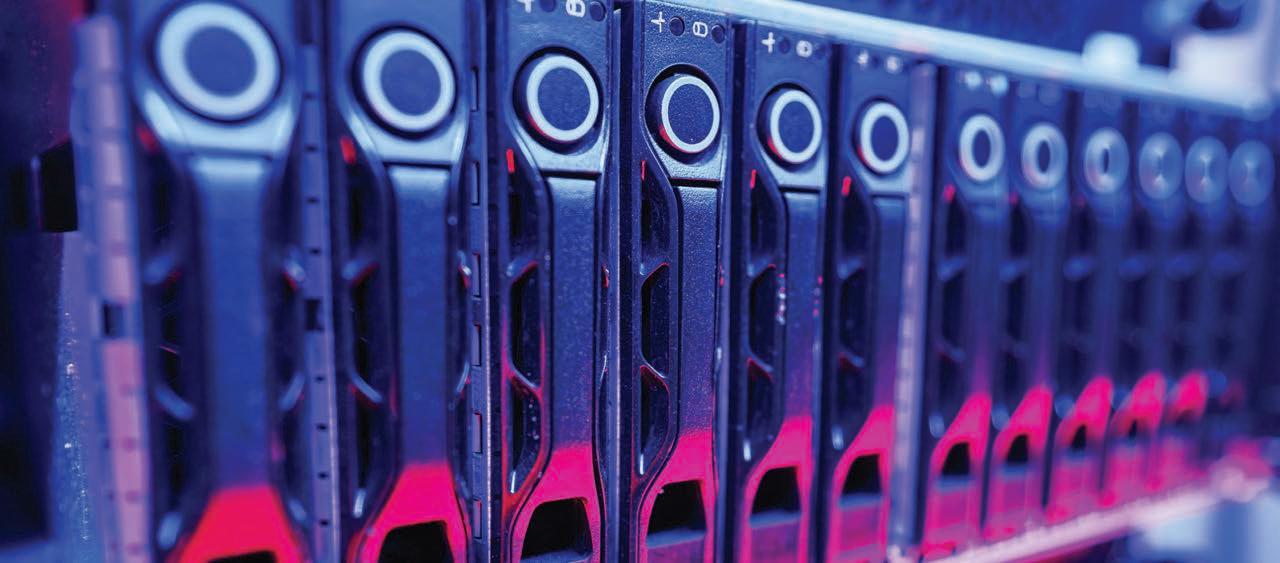
The foundational element for all connectivity and the ability to provide a future-ready smart data center comes from the network infrastructure. The infrastructure chosen will determine whether it will stand the test of time and outlive technology refreshes, or if it will need to be replaced every few years. Given the amount of workload on today’s average data center — and the accelerated pace of growing data usage — it’s critical to get the network infrastructure right.
Network infrastructure is made up of physical hardware and structured cabling that enables network connectivity, communication, operations and management of a network to provide the communications pathways, spaces and transmission links between users, processes, applications and services. The network infrastructure is an interconnected building system supporting multiple subsystems and technology applications for internal and external communications, power, lighting, cooling, security and various data center management tools.

Copper cabling lays the foundation for a future-ready communications network and is primarily comprised of category-rated, twisted-pair cabling and associated hardware that creates a structured cabling system. It is universal in application, serving a wide range of communication technologies such as Ethernet, wireless, professional A/V, building controls and a variety of PoE applications.
Fiber optic cabling offers a high-bandwidth method of transmitting information through a local area network (LAN) or wide area network (WAN) over extended distances by sending pulses of light through an optical fiber. The fiber optic cabling system is primarily comprised of field-terminated and preterminated optical fiber and associated hardware as part of a structured cabling system within a building, campus or large geographic area.
Designed to protect critical network infrastructure from damage while optimizing space, racks and enclosures are the frames, cabinets and housings that support passive components and active electronics across multiple technical spaces and environments. The cabinet is at the heart of the network infrastructure and needs to be designed for security, density, connectivity, administration, power and airflow.
Simplifying power and thermal component considerations begins by encompassing a total solution architecture with emphasis on delivery, reliability, efficiency and intelligence while addressing uptime throughout.
Providing a blueprint for distribution systems, which allows networks to expand and evolve, a variety of routing, raceway and conveyance systems are available for distributing, supporting and protecting network infrastructure cabling. The type of system and the installation method depend on the media being supported and the environment it will traverse.
Reliable wireless networks are designed to grow along increasing device traffic and evolving standards. These collaborative networks have traditionally been used in data centers for practical purposes, such as inter-facility communications, security, monitoring and environment control. But, as these technologies advance, transmitting greater volumes of data over longer distances, some data center operators are exploring the use of wireless networking to provide connectivity between servers. While installing wireless network interfaces in every server and device is not widespread, there are some potential benefits in the installation of wireless routers at the rack level, such as fewer cables, efficient network deployment, increased capacity and reduced costs.
Physical objects that are embedded with sensors, processing ability, software and other technologies require IoT enablement and wireless gateways to exchange data with linked devices and systems over the internet or other communications networks. These devices can be connected via copper or fiber cable, fixed wireless access, near field communications (NFC), Wi-Fi, cellular or private LTE/CBRS.
IoT and wireless gateways provide real-time monitoring of connected devices, remote control and manipulation of mechanical and electrical systems and data to automate and help make decisions through the use of software, with less manual interaction.

Following appropriate codes and standards would seem to be an obvious direction when designing a new or upgrading an existing data center. Data center design and infrastructure standards can range from required national and local codes, like those of the NFPA or the New York State Energy Conservation Construction Code, respectively, to optional performance standards like the Uptime Institute’s Tier Standard. Green certifications, such as LEED, Green Globes and Energy Star are also considered optional, but play a critical role in ESG, as well as environmental stewardship.
But mandatory codes are just the start. Within the data center industry, there are several standards that should also be followed.

The three major data center design and infrastructure standards developed for the industry include:
The ANSI/TIA-942 Telecommunications Infrastructure Standard for Data Centers is widely considered the global benchmark for related infrastructure performance and reliability. Developed, maintained, and reviewed regularly by the TIA Engineering Committee TR-42 Telecommunications Cabling Systems, the TIA-942 standard covers all aspects of data center physical infrastructure, including architecture and topology, environmental design, power systems, cooling systems, telecommunications, redundancy, fire protection, safety, monitoring and physical security. A key objective of the TIA-942 standard is to define how a data center should be built and configured to provide the level of reliability and resiliency required by end users.
To help data center owners and users define their expectations on the type of applications and data stored in their specific data center, TIA provides four ratings of resiliency. These ratings also serve as the foundation of the TIA-942 Certification Program, which enables data center facilities to be independently reviewed and certified for conformity to the standard, providing greater assurance to customers and stakeholders.
Rated-1: Basic Site Infrastructure The data center has single-capacity components; a single, nonredundant distribution path for all equipment; and limited protection against physical events.
Rated-2: Redundant Component Site Infrastructure
The data center has redundant capacity components, but nonredundant distribution path that serves the computer equipment.
Rated-3: Concurrently Maintainable Site Infrastructure
The data center has redundant capacity components and redundant distribution paths that serve the computer equipment, allowing for concurrent maintainability of any piece of equipment. It also includes improved physical security.
Rated-4: Fault Tolerant Site Infrastructure
The data center has redundant capacity components, active redundant distribution paths to serve the equipment, and protection against single failure scenarios. It also includes the highest level of security.

This standard develops a performance-based methodology for the data center during the design, construction and commissioning phases to determine the resiliency of the facility with respect to four tiers or levels of redundancy and reliability. The tiers can be found in greater definition in UI’s white paper TUI3026E. The origins of the Uptime Institute as a data center users group established it as the first group to measure and compare a data center’s reliability.
This standard covers the major aspects of planning, design, construction and commissioning of the MEP building trades, as well as fire protection, IT and maintenance. It is arranged as a guide for data center design, construction and operation. Ratings and reliability are defined by Class 0 to 4 and certified by BICSI-trained and certified professionals.
The European Committee for Standardization (CEN) and the European Committee for Electrotechnical Standardization (CENELEC) are two European organizations that author standards which satisfy industry and legislative requirements for electric and electronic goods sold in Europe, including European Norms (EN). To the right you’ll find some examples of the EN 50600 standards, which focus on information technology and data center products.
Other standards include, but are not limited to:
• International Standards Organization (ISO)
• ISO 11801 (formerly ISO 24764)
• ISO 30129
• Institute of Electrical & Electronics Engineers (IEEE)
• Local/regional regulatory standards
• National Fire Protection Association (NFPA)
• American Society of Heating, Refrigerating, and AirConditioning Engineers (ASHRAE)
These data center standards help operators limit the problems they experience. Significant issues with data center operations could arise if they aren’t followed, including regulatory violations, increased downtime, security risks and equipment damage.
Regardless of the standards followed, documentation and record keeping of your operation and maintenance activities is one of the most important parts of the process.

prEN 50600-2-4
FprEN 50600-4-9
FprEN 50600-4-8
EN 50600-4-7:2020
EN 50600-4-6:2020
EN 50600-4-3:2016/ A1: 2019
EN 50600-4-3:2016
EN 50600-4-2:2016/ AC: 2017-02
EN 50600-4-2:2016/ A1: 2019
EN 50600-4-2:2016
EN 50600-4-1:2016
EN 50600-3-1:2016
EN 50600-2-5:2021
EN 50600-2-5:2016
Information technology - Data centre facilities and infrastructuresPart 2-4: Telecommunications Cabling Infrastructure Under Approval
Information technology - Data centre facilities and infrastructuresPart 4-9: Water Usage Effectiveness Under Approval
Information technology - Data centre facilities and infrastructuresPart 4-8: Carbon Usage Effectiveness Under Approval
Information technology - Data centre facilities and infrastructuresPart 4-7: Cooling Efficiency Ratio
Information technology - Data centre facilities and infrastructuresPart 4-6: Energy Reuse Factor
Information technology - Data centre facilities and infrastructuresPart 4-3: Renewable Energy Factor
Information technology - Data centre facilities and infrastructuresPart 4-3: Renewable Energy Factor
Information technology - Data centre facilities and infrastructuresPart 4-2: Power Usage Effectiveness
Information technology - Data centre facilities and infrastructuresPart 4-2: Power Usage Effectiveness
Information technology - Data centre facilities and infrastructuresPart 4-2: Power Usage Effectiveness
Information technology - Data centre facilities and infrastructuresPart 4-1: Overview of and general requirements for key performance indicators
Information technology - Data centre facilities and infrastructuresPart 3-1: Management and operational information
Information technology - Data centre facilities and infrastructuresPart 2-5: Security systems
Published 2020-02-10
Published 2020-01-13
Published 2019-01-18
Published 2016-10-10
Published
Published 2019-01-29
Published 2016-10-10
Published 2016-10-10
Published 2016-01-26
Published 2021-03-22
Information technology - Data centre facilities and infrastructuresPart 2-5: Security systems Published 2016-01-25
EN 50600-2-4:2015 Information technology - Data centre facilities and infrastructuresPart 2-4: Telecommunications cabling infrastructure Published 2015-02-16
EN 50600-2-3:2019
Information technology - Data centre facilities and infrastructuresPart 2-3: Environmental control
Published 2019-04-29
EN 50600-2-2:2019 Information technology - Data centre facilities and infrastructuresPart 2-2: Power supply and distribution Published 2019-04-29
EN 50600-2-1:2021
Information technology - Data centre facilities and infrastructuresPart 2-1: Building construction
EN 50600-2-1:2014 Information technology - Data centre facilities and infrastructuresPart 2-1: Building construction
EN 50600-1:2019
Information technology - Data centre facilities and infrastructuresPart 2-1: General concepts
In addition to EN 50600, please also see EN 50173 part 5 and EN 50310.
Published 2021-03-22
Published 2014-01-06
Published 2019-04-29
Consolidating the right products, services and solutions takes time and focus away from delivering on business-critical needs and customer demands. As your partner, Wesco can help you:
• Be more flexible and scalable to stay competitive
• Develop partnerships with best-in-class contractors and integrators
• Expedite product ordering and delivery so you can react quickly
• Access top equipment and pricing for better cost-efficiency
• Maintain uptime without sacrificing performance or quality
• Reliably provide the best service at the best total value

Contractors and Integrators
Wesco couldn’t do what we do without our worldwide network of strategic partners. From assessment, design and permitting, to product selection, procurement, delivery, supply chain coordination, installation and IT management, Wesco works closely with our partners at every phase of a data center’s life cycle. Our global partnerships include:
• Contractors
• Integrators
• Installers
Our relationships with best-in-class suppliers, technologists, integrators and contractors allow us to offer exemplary solutions, products and services for data centers in dozens of countries around the world. Wesco’s global scale provides focused knowledge of local practices, regulatory processes and expands our partners’ reach. And our industry standing helps ensure that products and solutions will arrive when they’re needed, where they’re needed.


By thoughtfully planning, selecting and upgrading the technology and day-to-day assets needed to build or operate a data center, you can create a converged network that works together across nearly every aspect of the data center to improve overall operational efficiency, reduce emissions and manage energy usage.
Communications Infrastructure
• Cable management and pathways
• Copper and fiber cabling systems
• Grounding and bonding
• High-speed interconnects
• Racks and enclosures
• Tools and test equipment
Electrical Infrastructure
• Building wire
• Cable tray
• Conduit
• Flexible batter cable
• Grounding
• Lighting
• Lugs and connectors
• Medium-voltage cable
• Medium-voltage term kits
• Term kits
IT Infrastructure
• Compute and high-performance computing
• KVM and console management
• Media converters
• Networking
• PoE switches and injectors
• Storage
• Wireless technologies
MRO and Safety
• Communications devices
• Cones
• Ergonomics
• Fall protection

• Fire safety
• First aid
• Hand protection
• Hearing protection
• Hi-vis vests
• Janitorial
• Lockout/tagout
• Matting
• Safety training
• Signs and labels
Physical Security, IoT and Pro A/V
• Access control
• Analytics
• Asset track and RFID
• Cabinet electronic locking
• Command and control
• Data center infrastructure management (DCIM)
• Digital signage
• Intercom, sound and paging
• Mass notification
• Perimeter detection
• SaaS
• Security consoles
• Sensors and gateways
• Sound reinforcement
• Unified communications and collaboration
• Video displays
• Video surveillance
Power Generation and Distribution
• Automated switches
• Circuit protection
• Control house equipment
• Switch gear
• Transformers
Power and Thermal Solutions
• Environmental monitoring
• High-airflow dispersion floor tiles
• High-density and liquid cooling
• Hot and cold aisle containment
• Network monitoring
• Power busway
• Rack PDUs
• Surge protection
• Thermal management
• UPS systems
Renewable Energy
• Battery storage
• EV charging
• Microgrid
• Solar
• Sustainability services
Services
• Global supply chain services
• Rack and roll services
• Managed services
• Cloud infrastructure
• Data center design and construction advisory services
• Next-gen cooling design and deployment




Wesco provides best-in-class products and innovative solutions to meet customer needs for commercial and industrial businesses, contractors, government agencies, institutions, telecommunications providers and utilities.
We partner with leading manufacturers to deliver comprehensive solutions that provide 24/7 connectivity and enable security and safety in commercial buildings, data centers and parking facilities around the world.
We are a leading distributor of electrical products and services, and have been in business for over a century. From automation and control to relays, sensors, and switches, we have the products and solutions to meet all of our customers’ electrical needs.
We serve a diverse customer portfolio in the utility, broadband and industrial segments, with one of the broadest product offerings in the industry — all while helping customers optimize their network deliverables for subscribers and minimize operational expense.

Drive efficiency and profitability with innovative and customizable services. Our portfolio includes advisory services, supply chain management, logistics and transportation, procurement, warehousing and inventory management, as well as kitting and labeling, limited assembly of products and installation enhancement.
Engage our experts on an array of value-added and billable advisory services to support every industry we serve, helping channel partners and customers with technology, infrastructure and sustainability solutions.
Wesco will help keep projects running on time and manufacturing facilities running smoothly by optimizing products for use.
Wesco can prepare a coordinated, customized program to help secure jobsite materials, prevent loss, improve efficiency, reduce jobsite waste and provide product availability, keeping you well-stocked and your project on time and within budget.
Strengthen your operational resiliency and drive cost improvements in direct and indirect spend through supply chain assurance with Wesco.
Wesco can design, implement and manage your purchasing and inventory program, consolidating your supply base into a single-source solution to deliver documented savings and improved supply chain performance.
Our technical specialists and expert engineers help you harness information for data-driven intelligence and better business outcomes. Our team has expertise in connected devices and IoT, network infrastructure, sensors, wireless, cloud and edge computing, broadband, 5G and wireless.
Areas of expertise:
• IoT advisory service
• Digital solutions advisory service
• Technology roadmap and specification development
• Solution and application engineering
• Proof of concept (POC) testing
• Application drawings
• Codes and standards interpretation
• Installation recommendations and technology testing
• Education and training
The following pages provide examples of solutions and products from our strategic supplier partners that can help optimize a data center.


From one of the world’s most trusted brands in PDU comes a more reliable, intelligent and faster to deploy PDU. APC’s advanced rack PDU solutions are designed for data centers and remote edge computing environments experiencing rising power densities that demand always-on IT infrastructure. IT devices in these environments need certainty, and the rack PDUs provide it with features that make them faster to deploy, enhance their reliability, and make them easier to manage on-site or remotely anywhere in the world with EcoStruxure IT.
4-in-1 outlet for increased flexibility:
Acts as C13, C15, C19 and C21
More power:
Up to 48 outlets and 34.6 kW of power on one PDU
1% metering accuracy:
Know exactly how much power each outlet uses
Slim design:
Add more PDUs to the same rack
60°C operating temperature:
Can operate at higher temperatures to protect equipment from downtime
Environmental sensors:
Optional sensor support that monitors for temperature, moisture and unwanted access
Alternating phase and colorcoded outlets:
Quickly see which breaker protects which outlets; simplify installation and setup, including load balancing
Customized for your needs:
Configure-to-order options available for a variety of colors, input cord lengths and input cord types
Fast, flexible mounting:
Toollessly mount in APC and most industry standard racks.
Optional side mounting for narrow racks
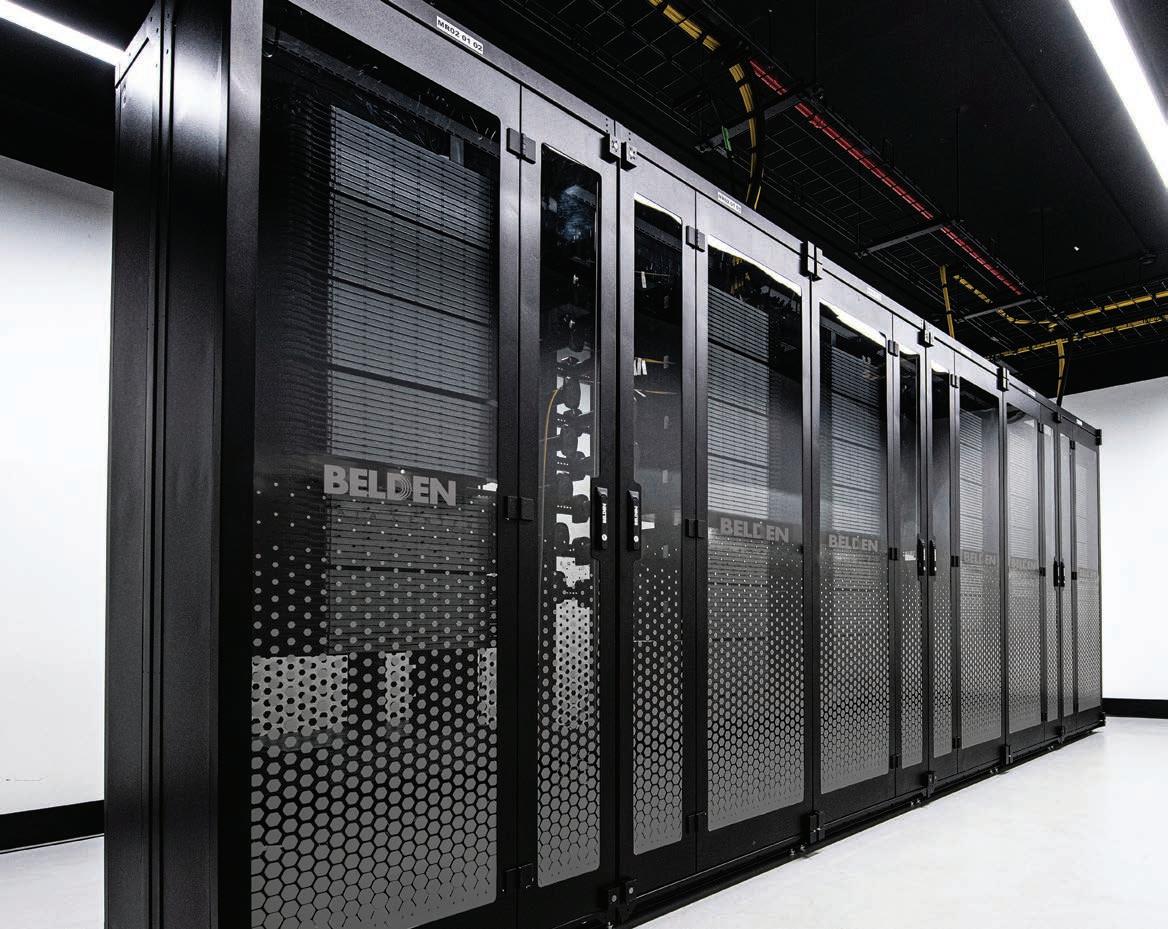
More fiber connections are needed to handle the shift from 40G to 100G Ethernet as well as emerging 400G technologies. To ensure uptime and efficient operation and maintenance, there’s also an increasing need to manage these growing numbers of fiber connections.
Handle large amounts of fiber connections and increase fiber density without compromising on ease of use. The new DCX System optimizes the ROI of your fiber infrastructure, reducing capital and operating expenses to offer lower total cost of ownership.

Improve your data center’s capacity and response time, and stay ahead of explosive growth and demand with CommScope’s Propel solution. Designed to help you better manage, maintain and plan your evolving infrastructure, it features high-density fiber panels, modules, adapters and fiber assemblies that deliver more functionality and speed with fewer parts and an open path to 400 Gb and 800 Gb. Now you can maximize design options and manageability while reducing deployment time, cost and complexity.
• High-density Panels: PPL-1U, PPL-2U, PPL-4U
• MPO16 modules: PPL-DM-16AU-16LC-SM-BEU, PPL-DM-16AU-16LCOM4 BEU, PPL-DM-16AU-16LC-OM5-BEU

• 16-fiber adapter packs: PPL-AP-16-LC-SM, PPL-AP-16-LC-OM4, PPL-AP16-LC-OM5, PPL-AP-8-MPO16-ALL-B, PPL-AP-4-MPO16-ALL-B, PPL-AP-6MPO16-ALL-B, PPL-AP-12-MPO16-ALL-B
• Propel MPO16 APC assemblies

Corning EDGE™ Distribution System streamlines server row cabling by replacing many patch cords with a single assembly that is pre-engineered to your customers’ exact specifications with access points at defined locations along the assembly, dropping fiber legs for connectivity required at each cabinet. The EDGE Distribution System provides faster installation, reduced risk and less congestion along with reduced packaging and simpler inventory management.
Work with your Corning expert to explore and configure the EDGE™ Distribution System for your customer and simplify their installation with custom labeling, color coding and our new EDGE™ Lockable Uniboot Jumpers. Start with the EDGE Distribution Guide to learn more.
SPECS
• Pre-Engineered for Fast, Easy Installation –Compared to a traditional patch cord deployment, EDGE Distribution System is one assembly, one SKU and one box, installed in approximately 45 minutes.
• Personalized to Your Exact Needs – Custom fiber count, access points and dimensions designed for the customer’s specific data center design. Plus custom labeling and color coding help simplify installation.
• Minimize Risk – Simplified installation means less ladder time and less skilled labor needs, reducing the risk associated with server row cable deployments.


The ZetaFrame® Cabinet from Chatsworth Products (CPI) is a highly engineered data center cabinet solution that delivers fast built-to-order configurability and industry-leading strength and scalability, regardless of the application. ZetaFrame Cabinet is a total, turnkey solution that integrates with power, cable and thermal management accessories to support next-generation compute. The CPI eConnect® PDUs can be ordered and preinstalled in a ZetaFrame Cabinet under one part number.
• Part Number: ZB45-A121B-E1 – ZetaFrame® Cabinet Glacier White
• Part Number: 10003113 – eConnect® Switched PDU, Switch Pro Econ Intelligent Redundant, 42U, 120-208V, 3 Phase, 20A, L21-20, black and white, 18-C13, 6-C19, 3 5-20 Pack includes 1 black and 1 white PDU

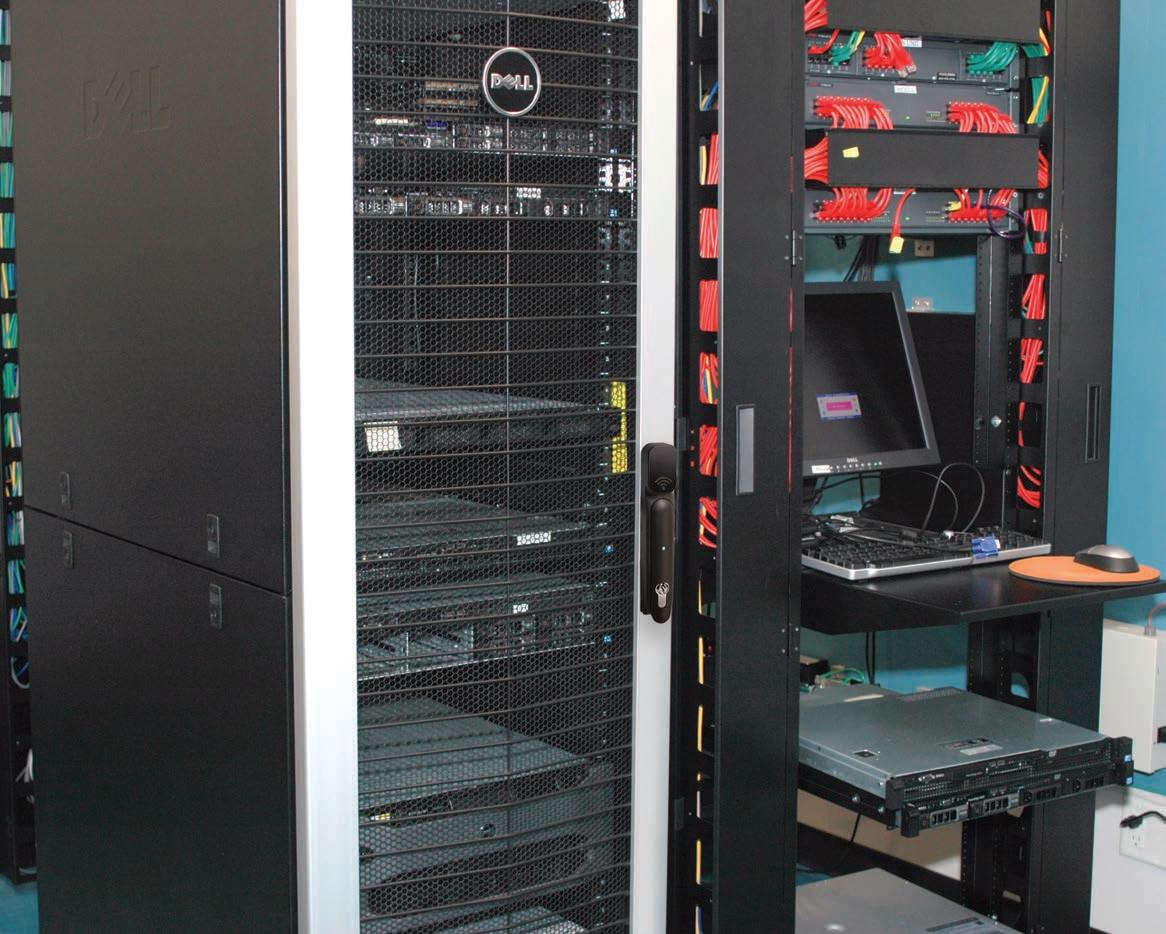
A data breach can happen by more than hackers. Unauthorized access, human errors and protocol failures can also lead to data breach damage. A layered access control design is critical for securing a data center and avoiding data breach damage. Each access point is integral to achieving the highest security level desired.
The base layer starts at the perimeter. Gates and entry points should be equipped with high-security hardware, readers and personal interlocks to detect and delay unauthorized personnel from entering the building. After authorized entry, security continues through each hall and into the data rack handles. Dormakaba has solutions that will fit each need.
• Data rack security with RCI 3525 rack handle
• Secure door locking with Best 45H hardware and PHI Panics wired to access control
• Personal Interlock controllers PIL-M01 or S01
• Loading dock doors or sliding gates with RCI YG8
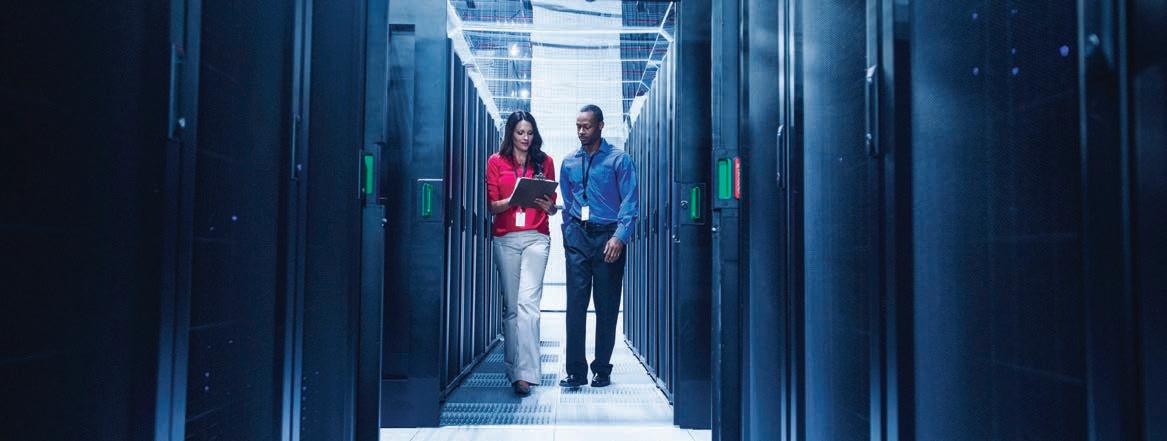
Offer your customers the latest power protection, storage and security solutions.
• Sensors
• Security handle
• Racks and cabinets
• Power distribution unit
• DCIM cloud software
• UPS and external battery
Scan to view Panduit Solutions


The Wesco Innovation Center Brings It All Together for You
• See live customized demos
• Connect with Wesco technical subject matter experts
• Test solutions in our labs before implementation
• Experience 3D touchscreen interaction
• Get hands-on with displays of the latest products
• Share ideas using the most advanced A/V technology in the world
• Recharge in our café with espresso, lattes, cappuccino and cold beverages
Most importantly, the entire experience is tailored to your specific needs.
Scan to take a virtual tour
Watch a short video that takes you inside the Wesco Innovation Center
ESSENTIALS AT A GLANCE
Location
2301 Patriot Boulevard, Glenview, IL 60026
Purpose
Brings together highly-tailored technology, the latest product options and industry expertise so you can design and test solutions before implementation
Personnel
Technical subject matter experts on-site
Applications
• Electrification
• Automation and IoT
• Green energy and grid modernization
• 24/7 connectivity and security
As a leading provider of business-to-business distribution, logistics services and supply chain solutions, Wesco is ready and able to help you navigate business complexities.
We serve those who drive productivity and progress, meeting business challenges with innovation and solutions that keep our world running and advancing. For over 100 years, our combination of scale and local expertise has provided focus and speed to transform the way you do business and, in turn, the way people work and live.
With 20,000 employees in nearly 800 branches, warehouses and sales offices in more than 50 countries, we serve you with the continuity and quality you trust, wherever your business takes you.
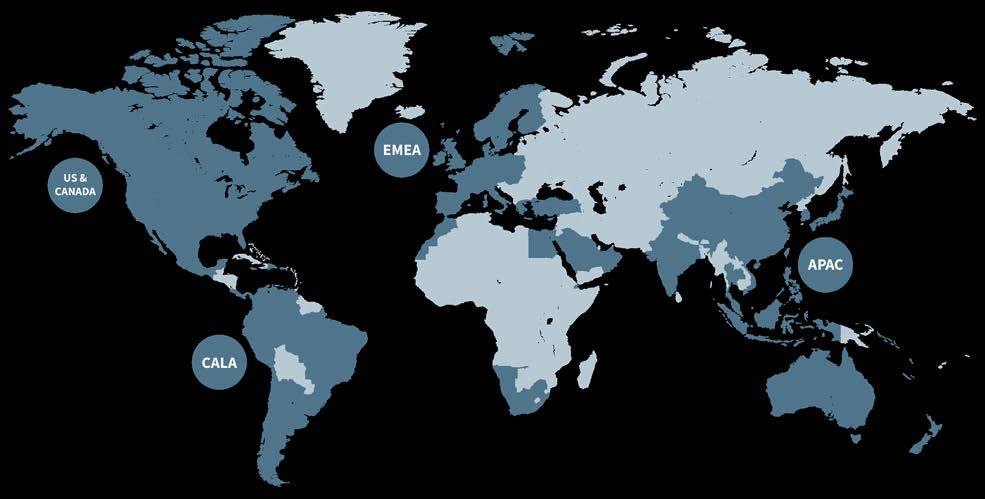
We proudly support approximately 150,000 customers worldwide. As your partner, you gain access to our broad portfolio of millions of products from approximately 50,000 suppliers.
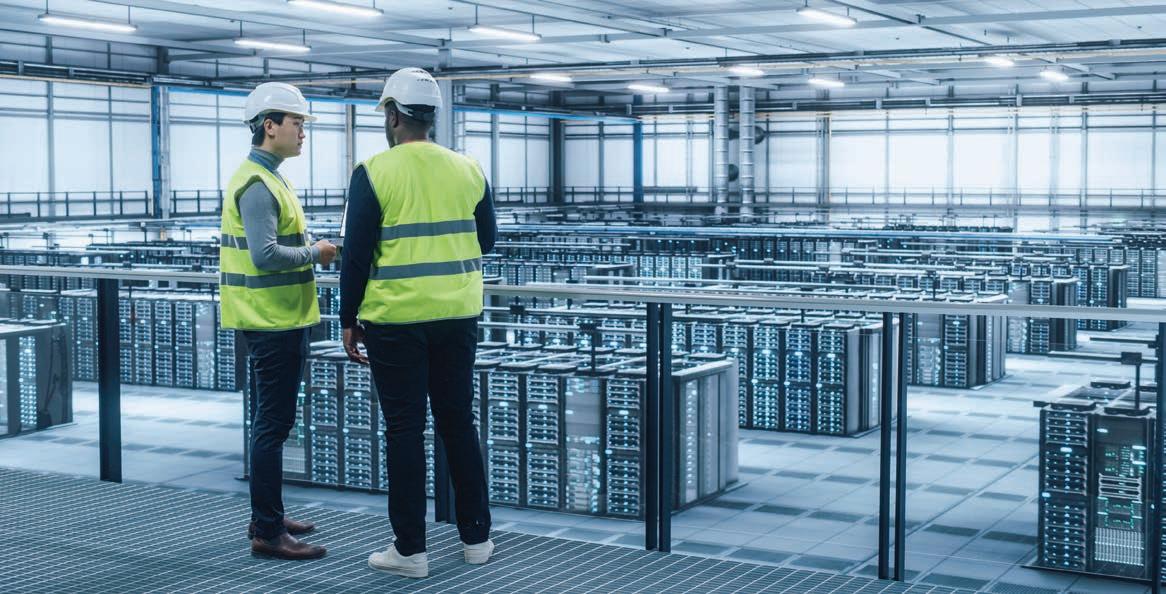







• A10
• Amphenol
• Appgate
• Apple
• Arbor
• Arctic Wolf
• Automation
• AWS
• Azure
• Checkpoint
• Citrix
• Cloudflare
• Cohesity
• Comnet
• Coresite
• Cradlepoint
• Cylance
• Dell
• Digital Realty
• Druva
• Enconnex
• Entrust
• Equinix
• F5
• Firemon
• Fireye
• Fluke Networks
• Forescout
• Fortanix
• GCP
• Gemalto
• Gigamon
• Google Cloud
• Halcyon
• Horizon 3
• IBM
• Infinidat
• Infoblox
• Ix Systems
• Kendall Howard
• Lantronix
• Microchip
• Microsoft
• nCipher
• Nile
• Nlyte
• Nokia
• Nutanix
• Nvidia
• NVT Phybridge
• Octa
• Opengear
• Palo Alto Networks
• Prolabs
• Proofpoint
• Pure Storage
• Qomplx
• Radware
• Raritan
• Redhat
• Reliaquest
• Rockwell
• Rubrik
• Schneider Electric
• Securview
• Seimens
• Server Lift
• Server Technology
• Silverfort
• Skyport
• Specified Tech
• Splunk
• Stellar Cyber
• Supermicro
• Tanium
• Tempo Comm.
• Tenable
• Trendnet
• Upsite Technologies Inc.
• VAST
• Vectra
• Veracity
• Versa
• Viavi Solutions
• Vmware
• Weka
• Winston
• Zero Connect

